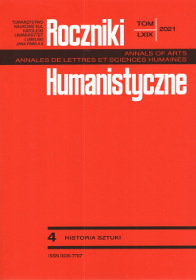Canis lupus familiaris. Symbolika psa w historii, sztuce i literaturze – zarys problematyki
Canis lupus familiaris. The Symbolism of the Dog in History, Art and Literature: An Overview
Author(s): Sławomir FilipekSubject(s): Fine Arts / Performing Arts, History of Art
Published by: Towarzystwo Naukowe KUL & Katolicki Uniwersytet Lubelski Jana Pawła II
Keywords: dog; culture; art; painting; literature; history; religion; symbolism
Summary/Abstract: The dog has accompanied humans ever since the dawn of time. It has taken part in hunting, served as a guardian of property, and as a pet for entertainment. It has been associated with positive qualities such as loyalty, devotion, vigilance and attachment. Over the centuries, it has gained a number of representations in culture and art, both positive and negative. It is worth noting that, besides the cat, it is the only animal which has appeared in all cultures and beliefs from the dawn of time down to the present day. In antiquity, it had already gained a special place in the court of the pharaohs, as well as in the pantheon of the gods in Egypt or among the Greek gods as their companion. It was present in the lives of the rich and the poor, and was used for various purposes. Not surprisingly, the rich biblical symbolism, which, interestingly, in the Old Testament, has negative overtones, was later replaced by positive interpretations in the New Testament, the writings of the Church Fathers, and hagiographies. The dog has thus been not only a symbol of fidelity, devotion, self-sacrifice and courage, but also one of licentiousness, greed and hostility, as is shown in this study, which makes reference to various biblical and artistic themes. Folk beliefs emphasise the importance of the dog in witchcraft, magic and even healing, presenting it as an unusual animal. It is also featured in such spheres as heraldry, numismatics, sphragistics, and on postage stamps and medals. Today’s mass culture has produced a number of new references to the dog in film, literature, comics and animation, all of which combine the wealth of this symbolism developed over the centuries, especially as icons of fidelity and devotion.
Journal: Roczniki Humanistyczne
- Issue Year: 69/2021
- Issue No: 4
- Page Range: 447-470
- Page Count: 24
- Language: Polish

